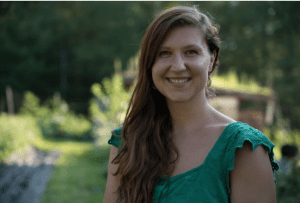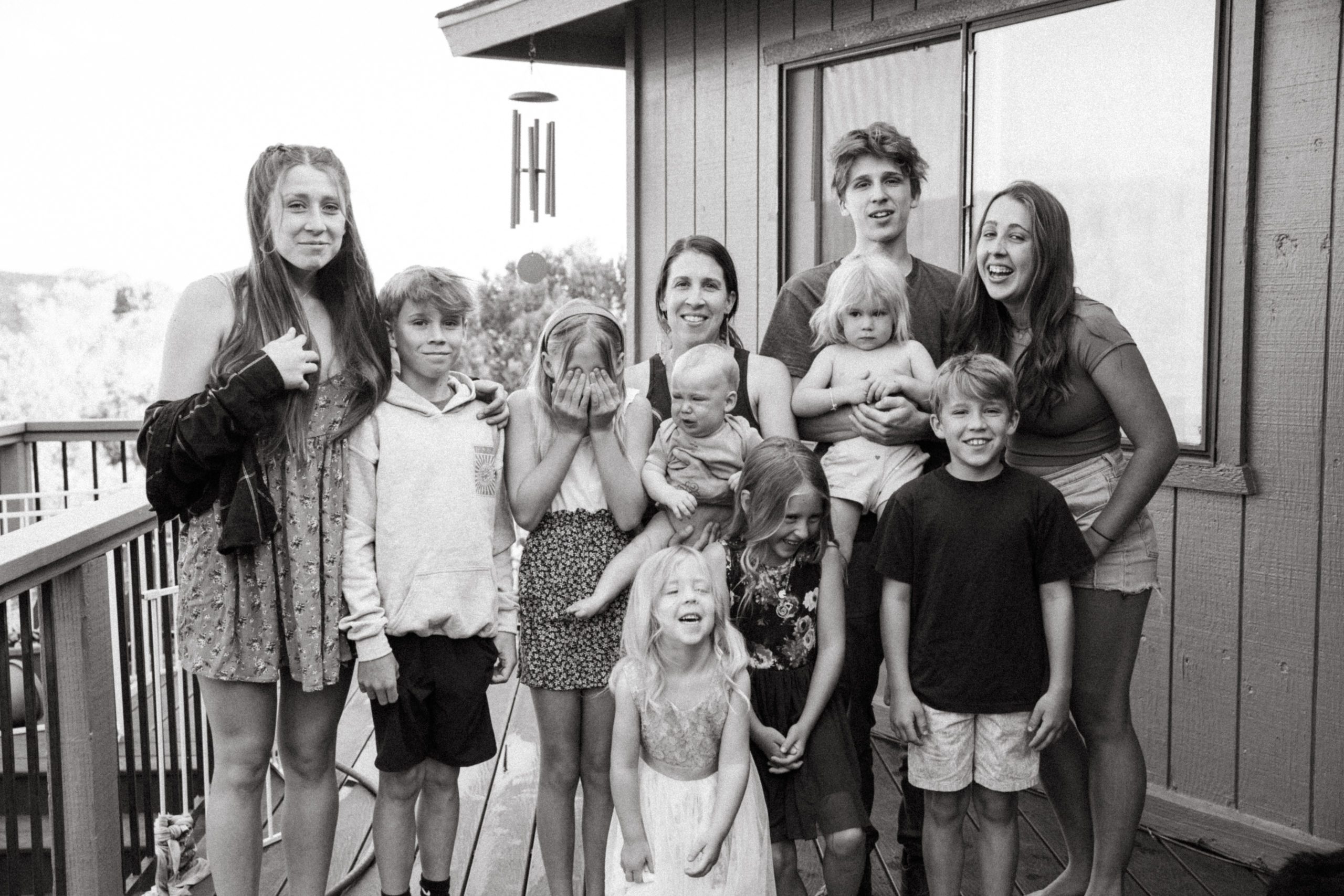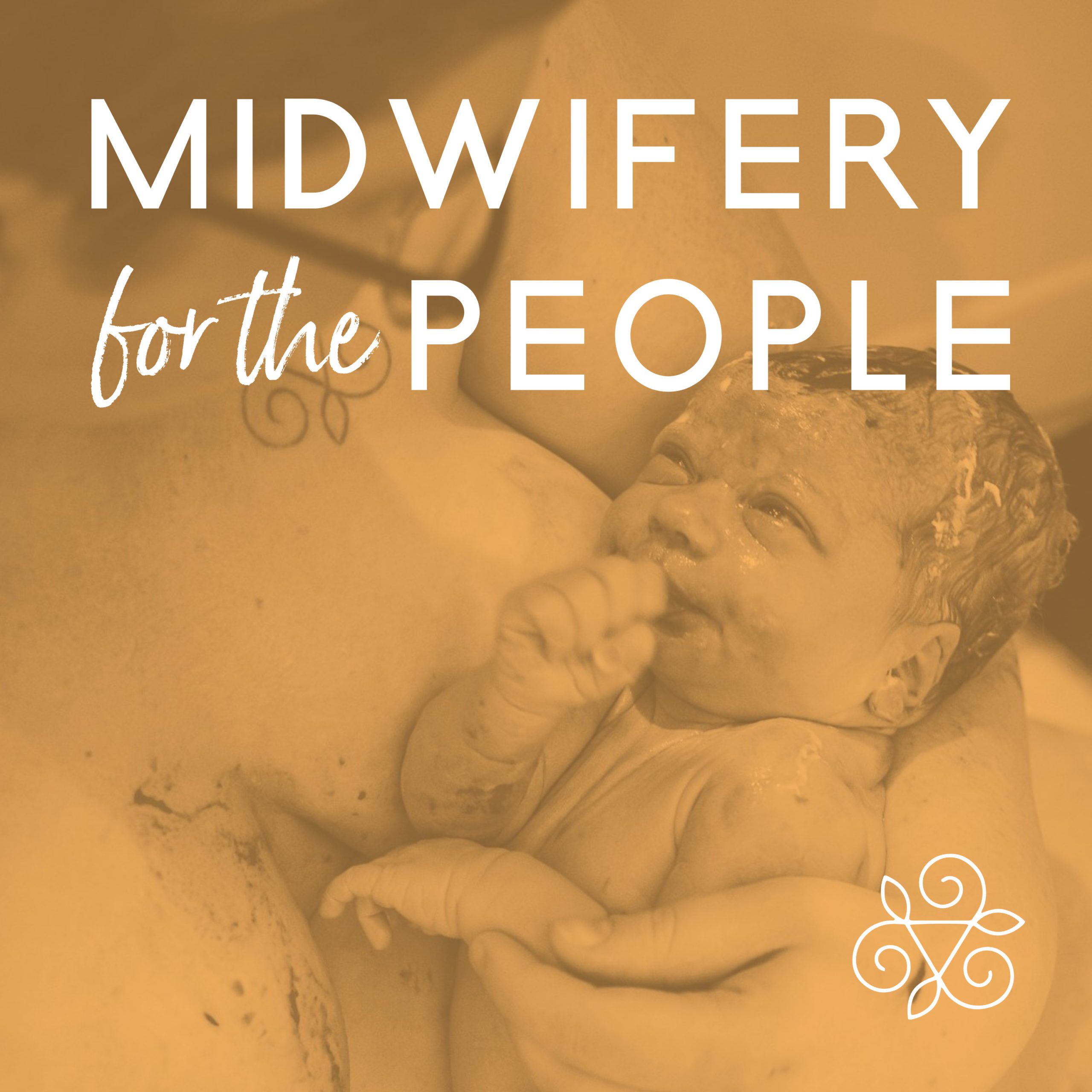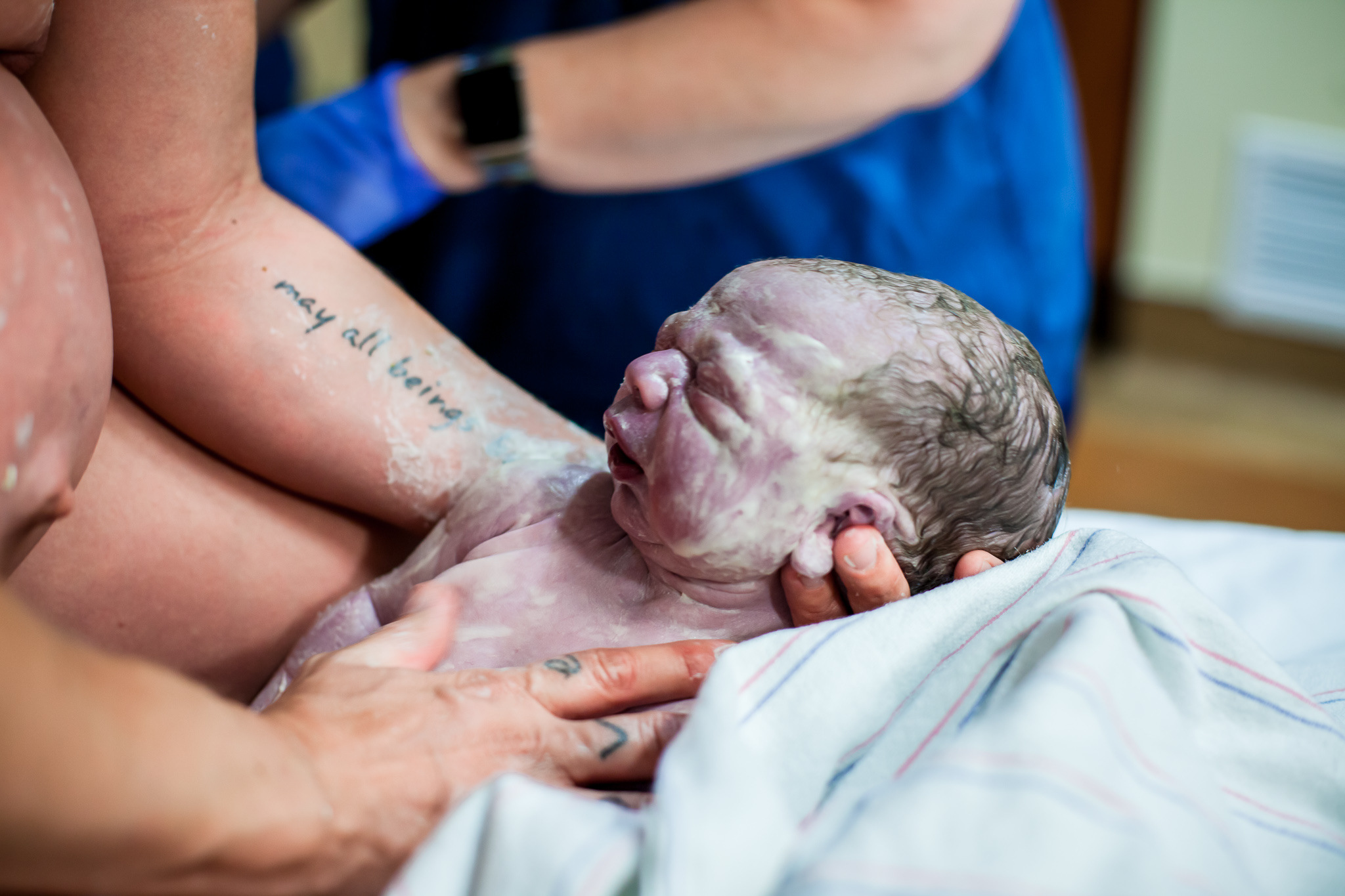Guest Post by Sara Philkill
I have the pleasure of teaching our Speaking Your Truth: Content Creation for Birth Workers course once a year for the Indie Birth Midwifery School, and I love sharing (with permission!) some of our standout pieces that students create. It is so exciting to see awesome content generated, and to think about the tangible ways this will positively impact our birthing world. This piece is so lovely and grounded, and will add to the discussion on what postpartum social support could/should look like. Enjoy!
————————————————————–
For most expecting mothers, the first few weeks of motherhood are anticipated with excitement and joy. However, for many new mothers, the period following birth can turn out to be a challenging time in their lives. Postpartum depression is a symptom of a larger issue that too many women are experiencing. One study found that up to one in seven women experience postpartum depression (Wisner KL, Sit DKY, McShea MC, et al). This does not take into account women who experienced miscarriages, stillbirths or abortions, nor women who are undiagnosed. It’s suspected that up to 60% of women experiencing depressive symptoms are not clinically diagnosed (Ko, Rockhill, Tong, Marrow). Therefore, the rates of postpartum depression are probably much higher than the statistics are showing.
I began my research trying to find evidence that the practice of traditional postpartum rituals lessened the likelihood of postpartum depression. My findings were multifaceted. I found that sometimes when the rituals were practiced there were fewer cases of PPD, but sometimes the practices seem to exacerbate the problem. The following excerpt explains the situation more deeply: “Unsatisfactory pre-existing relationships between the mothers and their caregivers resulting in mothers experiencing difficulties during their confinement period may be another factor. Thirdly, some features of these traditional rituals may be the cause of tension, stress and emotional distress. Emotional conflicts caused by insistence on practice of traditional rituals during the postpartum period may lead to mental breakdown” (Abdollahi,Lye, Zain,Ghazali,Zarghami). While postpartum rituals can most certainly be helpful, they alone will not protect a woman from experiencing depression . The global crisis of postpartum depression would be greatly alleviated if new mothers received strong and loving support from their partners, extended family and friends. In this paper I will explain the ways that women are physiologically designed to receive loving care during the postpartum period, and the issues which arise when this does not occur. Though this concept may seem simple and obvious, my goal in writing this article is to break down the importance of social support during the postpartum period so clearly that it is undeniable. My wish is that every mother, doula, birthworker, etc, who reads this does everything in their power to educate and encourage the new mothers in their communities to create and demand loving support systems.
The period of time after a new mother gives birth is a precious and fragile. When treated with utmost respect and honor, mother can heal from lifelong physical imbalances and create a life long bond of love with her baby. When not properly supported, many issues can arise, including digestive issues, hormonal imbalances and postpartum depression (Garcia Seliga 8). The Mother has just accomplished one of the most physically demanding events of her life; her body is wide open. She has completed her nine month journey of growing a new human inside her and she has brought forth new life into the world. She has crossed the bridge from maiden to mother. For many women, these are defining moments of their lives. Emotionally and hormonally, new mothers are designed to be extremely sensitive and open during this time. High levels of estrogen in pregnancy increase the amount of oxytocin receptors in the mother, laying the foundation for a strong bond with baby. The hormones prolactin and relaxin are also heightened at this time. Rachelle Garcia Seliga speaks to the roles of the postpartum hormones: “ Prolactin is called the mothering hormone, it allows mothers to be more responsive to their babies and has a calming effect. Prolactin levels in a recently postpartum mother are four times higher than in non-pregnant/ non lactating women” (Garcia Seliga 298). Prolactin causes the new mother to be in sensitive state of being, which allows her to be hyper- aware of the baby’s needs. These hormonal levels put the new mother in a position of being extremely vulnerable, and therefore less protected from emotional or energetic dischord.
The early weeks of postpartum are often accompanied with lack of sleep, physical stress and discomforts, all of which are a recipe for high levels of cortisol, also known as the stress hormone. There is a phenomenon called pregnenolone steal. When our bodies are under prolonged periods of stress, ie: postpartum, our adrenal glands “steal” a prohormone called pregnenolone. Instead of being made into progesterone, pregenonlone is made into cortisol to respond to the high stress levels. “Cortisol helps us deal with stress by shutting down unnecessary functions in the body such as reproduction and the immune system.” (Garcia Seliga 8 )When the pregnenolone is “stolen” it throws off the balance of progesterone and estrogen, creating short and long term issues. “These short-term symptoms of “pregenonlone steal’, parallel what we know in the modern world as ‘Postpartum Depression” (9). In short, when mothers do not receive loving supportive care, they do not have time for adequate sleep, rest, or time with their babies. This triggers a physiological response which lays the foundation for sickness, depression and bonding challenges. As bleak as this sounds, there is another option.
Enter Oxytocin, the hero of this story. Oxytocin in some ways is the opposite of cortisol. Known as the love hormone, oxytocin is responsible for function called “calm and connect”, which Kerstin Moberg coined in her book, The Oxytocin Factor. The functions of the calm and connect are responsible for healing, creation of loving bonds with other humans, and relaxation. When our bodies are in a state of relaxation we can heal and grow. (Moberg). Oxytocin is released when we are surrounded by loved ones, through skin to skin contact, and when breastfeeding. Oxytocin works in a positive feedback loop, so when one feels safe, open, and wants to connect with other humans, the desire to continue to interact grows. Kerstin Moberg sheds light on this dynamic. “In experiments with rats given injections of oxytocin promote various kinds of physical closeness, maternal behavior…the animals sit closer to each other, sniff each other more and groom each others’ fur more often. These activities set in motion a positive cycle of effects and lead to increased secretion of the animals own oxytocin which in turn promotes more interaction” ( Moberg 121-122).
This looks like a close friend or family member coming to the mother with a warm cup of tea, rubbing her feet, embracing her, or rubbing her sore back. This looks like mother snuggling, nursing, and bathing her baby. When there are people around to lovingly care for mother, she can put all her focus on her baby, which in turn increases oxytocin. This stimulates bonding, and the cycle continues. These functions are key component for mothers to heal and to bond with their babies. Rachelle Garcia Seliga explains, “ Beyond birth, mother continues to produce elevated levels of Oxytocin as a consequence of nursing and holding her infant. The amount of Oxytocin produced is contingent on the amount of contact Mother and baby have with each other” (Garcia Seliga 299). Adequate support from friends and loved ones is imperative for mother to have the time and space to bond with her baby. If new mothers are responsible for tending to all the daily chores of cleaning, cooking, and caring for older children, there is simply not enough time and space for her to rest and bond with her new baby. Senior lecturer of New South Wales, Mira Crouch lends her expert observation:
As continuous caretaking of the infant is the active expression of evolved maternal responsiveness, departures from this pattern result in anxiety and distress that seek resolution. Manifestations of maternal distress in contemporary society are dysfunctional, however, since the present social structure does not provide spontaneous and immediate support that can spring forth within small, closely knit social units. Furthermore, for present-day mothers, distress is self-perpetuating since the ingrained tendency toward continuing responsiveness rarely finds practical expression and is thus converted into anxious vigilance and depression. This view generates the hypothesis that the emotional and cognitive contents of maternal vigilance are associated with the needs of the infant and will therefore be focused on crying and feeding. A number of qualitative studies of women’s experiences during the postpartum bear out this prediction and support the feasibility of the evolutionary hypothesis of “postnatal depression” as a set of adaptive responses, now out of place in a novel environment.
(Crouch)
Unfortunately, this support is not always available for women. Support in itself does not decrease the levels of postpartum depression, but specifically support from loved ones. For example, in a literature review by Rena Bina it was found that, “ For Vietnamese women, poor quality of relationship with partners and wanting more practical support from them were associated with higher EPDS scores”( Bina 579). Another study shows the impact of lack of affection from caregivers , “The findings revealed that lower affectionate support and lower positive social interaction were related to a higher likelihood of postnatal depression (Chojenta et al., 2012).” The following studies show the other side of the coin, ”… the higher the support received from husbands and parents, the less likely women were to have postpartum depression”(Bina 582). The following study more specifically highlights the importance of social connection, not just professional support, “Their descriptive correlational study conducted in Ireland (N = 410) found no association between professional support and PPD; however, the authors did report an inverse relationship between social structure, functional support, and PPD” ( Leahy-Warren et al. (2011). While it is not specified, it can be assumed that in the examples of “poor quality of relationship” and “lack of affection” oxytocin levels were low. On the other hand, the examples of women receiving higher levels of support one can draw the conclusion that the mother was feeling loved and therefore her oxytocin levels where higher; preventing feelings of sadness and despair.
While life stresses have always been present, lack of support has not. For hundreds of thousands of years humans have lived together in tight family units and communities. When a new baby was born, friends, sisters, aunties and grandmothers were present in the home, providing care. Modernization of cities is separating people from their extended families; instead of living in the hut or house next door, grandmothers and aunts often live in different states or across the country. This splitting of the extended family puts a high level of stress on new families, especially during the postpartum period. Therefore, for many new families it seems as though this vital support is not available, or at least very difficult to find. “… the American culture is one of rugged individualism wherein postpartum mothers are often left without support from professionals or their families and friends. Because most family members and friends are involved with their own family and work responsibilities, the social support circle is unable to provide much help. (Ugarriza, Brown, & Chang-Martinez, 2007)”
The first step to solve the issue of postpartum depression is education and understanding. If we are to create a solution to this problem, it is imperative that we first understand the implications of mothers not receiving proper postpartum care. The impacts of postpartum depression can take a serious toll on the well being of the new baby. “Maternal depression has been shown to significantly stress infants, causing them to have less secure maternal–child attachment; be fussier; and have lower intellectual and motor development scores, poorer academic performance, and impaired development trajectories (Dennis et al., 2012). The effects of maternal postpartum depression go well beyond infancy, “…, boys with early adversity[maternal PPD] are more likely to have difficulties with language and intellectual development, attention deficit disorder (ADD), behavioral problems, conduct disorder, violence, future substance misuse and criminality. There is also evidence that if girls have early adversity, poor attachment, suffer neglect or insecure attachment, they are more likely to develop personality disorder, depression, anxiety and self-harming behavior”(Abel). The negative impacts of postpartum depression are serious and need to be acknowledged. . What kind of world are we shaping if the rise of postpartum depression continues to rise, and the children we are raising have an unstable foundation of attachment and human connection?
While it is true that tribes and extended families in the most traditional sense are being broken apart, not all hope is lost. More and more people are beginning to see the importance of creating community with their friends. One of the most important steps is for new mothers to acknowledge is that they will need help. With most of the postpartum mothers I have worked with, it has been very difficult for them to accept the support I have offered. I see women work very hard to prove how strong and independent they are, and in turn this makes them weaker. There is great strength in asking and receiving help. If we come together to support mothers during this most precious postpartum time, we will alleviate the global crisis of postpartum depression, and in turn raise happier and more well adjusted children, along with stronger, healthier and happier mothers. As mothers, we are the nucleus of the family unit; happy, healthy mothers create happy, healthy families which in turn creates happy, healthy society.

Sara Philkill is trained as a Postpartum Care Provider and Consultant through Innate Traditions. She believes that the postpartum period is a sacred time in a woman’s life and deserves deep care and respect. Sara is studying to be a midwife through Indie Birth Midwifery School. She lives in Ellenville with her two children and partner. She is a co- owner of Flowering Sun Ecology Center, a small beyond organic farm, is a member of the Golden Drum community and studies spirituality and awareness with Maestro Manuel Rufino.
Please contact with any questions or inquiries @ 908-303-3748 or rosephil8@gmail.com
Resources:
Abdollahi, Fatemeh et al. “Postnatal depression and its associated factors in women from different cultures.” Iranian journal of psychiatry and behavioral sciences vol. 5,2 (2011): 5-11.
Abel, Katherine. “Motherhood and the Brain: What’s the Science Behind Caring for Your Newborn?” Flo.health, 14 Feb. 2019, flo.health/being-a-mom/recovering-from-birth/postpartum-problems/maternal-sensitivity-and-instincts.
Bina, Rena. “The Impact of Cultural Factors Upon Postpartum Depression: A Literature Review.” Taylor & Francis, 17 June 2008, www.tandfonline.com/doi/full/10.1080/07399330802089149.
Chojenta C., Loxton D., & Lucke J. (2012). How do previous mental health, social support, and stressful life events contribute to postnatal depression in a representative sample of Australian women? Journal of Midwifery & Women’s Health, 57(2), 145–150.
Crouch, M. Hum Nat (1999) 10: 163. https://doi.org/10.1007/s12110-999-1013-x
Dennis C., Heaman M., & Vigod S. (2012). Epidemiology of postpartum depressive symptoms among Canadian women: Regional and national results from a cross-sectional survey. Canadian Journal of Psychiatry, 57(9), 537–546.
Ko JY, Rockhill KM, Tong VT, Morrow B, Farr SL. Trends in PostpartumDepressive Symptoms — 27 States, 2004, 2008, and 2012. MMWR Morb Mortal Wkly Rep 2017;66:153–158. DOI: http://dx.doi.org/10.15585/mmwr.mm6606a1
Leahy-Warren P., McCarthy G., & Corcoran P. (2011). First-time mothers: Social support, maternal parental self-efficacy and postnatal depression. Journal of Clinical Nursing, 21(3–4), 388–397. 10.1111/j.1365-2702.2011.03701.x
Garcia Seliga, Rachelle. “Energy Center of our Root:Pelvic Bowl/Yoni.” Innate Postpartum Care Certificate Training,,Santa Fe, Rachelle Garcia Seliga, 2017, 8-9, 298-299
Ugarriza D., Brown S., & Chang-Martinez C. (2007). Anglo-American mothers and the prevention of postpartum depression. Issues in Mental Health Nursing, 28(7), 781–798.
Uvnäs Moberg, K. (2016). The oxytocin factor. Kbh.: Nota.
Wisner, Katherine L. “Onset Timing, Thoughts of Self-Harm, and Diagnoses in Postpartum Women With Screen-Positive Depression Findings.” JAMA Psychiatry, American Medical Association, 1 May 2013, jamanetwork.com/journals/jamapsychiatry/fullarticle/1666651.





Great reflection. May enough people read and understand the impact happy mothers can make on society.
Thanks for reading Sharon!
My Mom was in the middle of her midwifery training in Italy, when her family upped and moved to the states for a “better life.” Mom was alone and isolated and had no one to support her around and during her 5 births. As a result, she suffered postpartum depression with her second baby which resulted in a difficult relationship throughout their lives. This was followed by a stillbirth. Some research indicated that at that time, unbeknownst to selected pregnant women, a experimental drug was given to immigrant women post birth to cause miscarriages, stillbirth, etc. Make of it what you will.